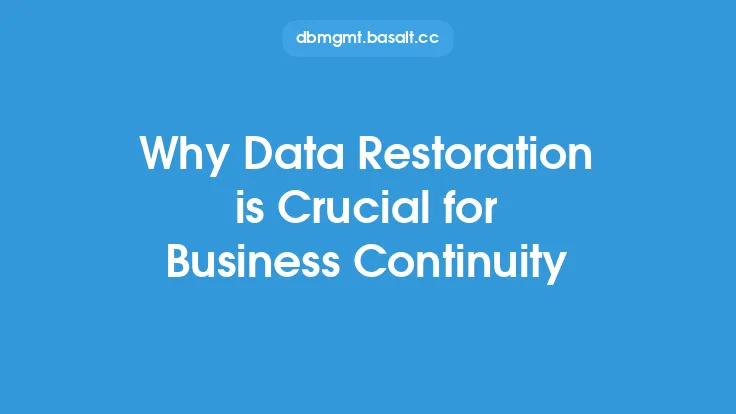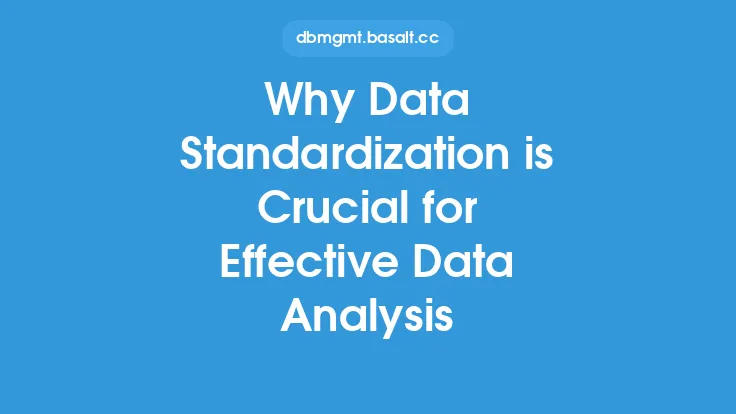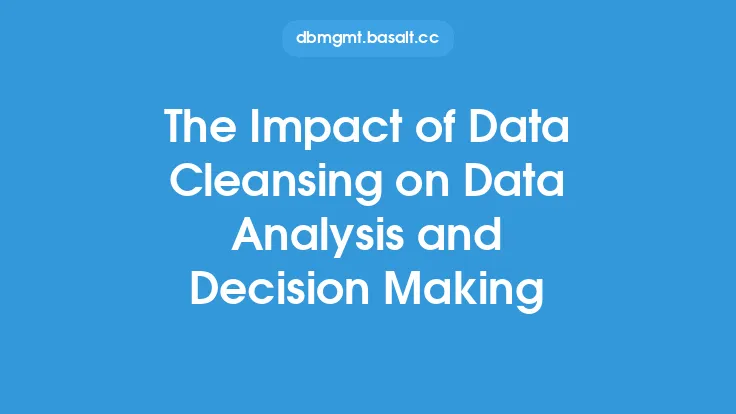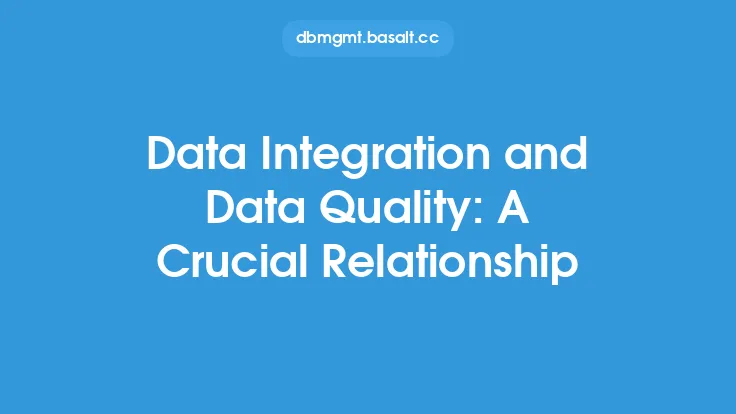Data validation is a critical process in data analysis that ensures the accuracy, completeness, and consistency of data. It involves checking data for errors, inconsistencies, and inconsistencies, and correcting or transforming it to ensure that it is reliable and usable for analysis. In this article, we will explore the importance of data validation in reliable data analysis, the types of data validation, and the techniques used to validate data.
Introduction to Data Validation
Data validation is an essential step in the data analysis process. It helps to ensure that the data is accurate, complete, and consistent, which is critical for making informed decisions. Invalid or inconsistent data can lead to incorrect conclusions, which can have serious consequences in business, healthcare, and other fields. Data validation involves checking data against a set of rules, constraints, and patterns to ensure that it meets the required standards. This can include checks for data type, format, range, and consistency, as well as checks for missing or duplicate data.
Types of Data Validation
There are several types of data validation, including syntax validation, semantic validation, and structural validation. Syntax validation checks the format and structure of the data, ensuring that it conforms to the required standards. Semantic validation checks the meaning and context of the data, ensuring that it is consistent and accurate. Structural validation checks the relationships between different data elements, ensuring that they are consistent and valid. Each type of validation is important, and they are often used in combination to ensure that the data is reliable and accurate.
Data Validation Techniques
There are several techniques used to validate data, including data profiling, data quality metrics, and data validation rules. Data profiling involves analyzing the data to identify patterns, trends, and anomalies. Data quality metrics involve measuring the accuracy, completeness, and consistency of the data. Data validation rules involve defining a set of rules and constraints that the data must meet. These techniques can be used individually or in combination to validate data and ensure that it is reliable and accurate.
Data Validation Tools and Technologies
There are several tools and technologies available to support data validation, including data validation software, data quality tools, and data governance platforms. Data validation software provides a range of features and functions to support data validation, including data profiling, data quality metrics, and data validation rules. Data quality tools provide a range of features and functions to support data quality, including data cleansing, data transformation, and data standardization. Data governance platforms provide a range of features and functions to support data governance, including data validation, data quality, and data security.
Best Practices for Data Validation
There are several best practices for data validation, including defining clear data validation rules, using data validation techniques, and testing data validation. Defining clear data validation rules involves specifying the requirements and constraints for the data. Using data validation techniques involves using a range of techniques, including data profiling, data quality metrics, and data validation rules. Testing data validation involves testing the data validation rules and techniques to ensure that they are working correctly. These best practices can help to ensure that the data is reliable and accurate, and that it meets the required standards.
Challenges and Limitations of Data Validation
There are several challenges and limitations of data validation, including data complexity, data volume, and data variety. Data complexity involves dealing with complex data structures and relationships. Data volume involves dealing with large amounts of data. Data variety involves dealing with different types and formats of data. These challenges and limitations can make it difficult to validate data, and require specialized tools and techniques to overcome. Additionally, data validation can be time-consuming and resource-intensive, requiring significant investment in time and resources.
Conclusion
In conclusion, data validation is a critical process in data analysis that ensures the accuracy, completeness, and consistency of data. It involves checking data for errors, inconsistencies, and inconsistencies, and correcting or transforming it to ensure that it is reliable and usable for analysis. There are several types of data validation, including syntax validation, semantic validation, and structural validation, and several techniques used to validate data, including data profiling, data quality metrics, and data validation rules. By using these techniques and following best practices, organizations can ensure that their data is reliable and accurate, and that it meets the required standards.





